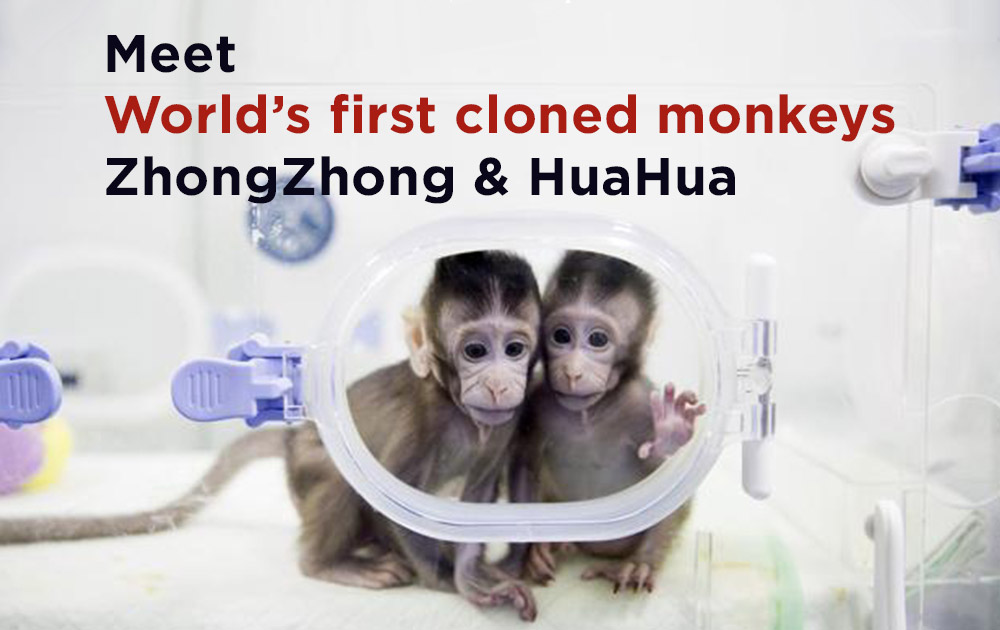The first primate clones made by somatic cell nuclear transfer are two genetically identical long-tailed macaques born recently at the Institute of Neuroscience of Chinese Academy of Sciences in Shanghai. Researchers named the newborns ZhongZhong and Hua Hua—born six and eight weeks ago, respectively—after the Chinese adjective “Zhōnghuá,” which means Chinese nation or people.
The technical milestone, presented on January 25 in the journal Cell, makes it a realistic possibility for labs to conduct research with customizable populations of genetically uniform monkeys. The academy in a news statement on its website said. “There are a lot of questions about primate biology that can be studied by having this additional model,” says senior author Qiang Sun, Director of the Nonhuman Primate Research Facility at the Chinese Academy of Sciences Institute of Neuroscience. “You can produce cloned monkeys with the same genetic background except the gene you manipulated. This will generate real models not just for genetically based brain diseases, but also cancer, immune or metabolic disorders, and allow us to test the efficacy of the drugs for these conditions before clinical use.”
Zhong Zhong and Hua Hua are not the first primate clones—the title goes to Tetra, a rhesus monkey made in 1999 by a simpler method called embryo splitting (Science, v. 287, no. 5451, pp. 317-319). This approach is how twins are made, but can only generate up to 4 offspring at a time. Zhong Zhong and Hua Hua are the product of somatic cell nuclear transfer (SCNT), the technique used to create Dolly the sheep over 20 years ago, in which researchers remove the nucleus from an egg cell and replace it with another nucleus from differentiated body cells. This reconstructed egg then develops into a clone of whatever donated the replacement nucleus.
Differentiated monkey cell nuclei, compared to other mammals such as mice or dogs, have proven resistant to SCNT. Sun and his colleagues overcame this challenge primarily by introducing epigenetic modulators after the nuclear transfer that switch on or off the genes that are inhibiting the embryo development.
The researchers found their success rate increased by transferring nuclei taken from fetal differentiated cells, such as fibroblasts, a cell type in the connective tissue. Zhong Zhong and Hua Hua are clones of the same macaque fetal fibroblasts. Cells from adult donor cells were also used, but those babies only lived for a few hours after birth.
“We tried several different methods but only one worked,” says Sun. “There was much failure before we found a way to successfully clone a monkey.”
The researchers plan to continue improving the technique, which will also benefit from future work in other labs, and monitoring Zhong Zhong and Hua Hua for their physical and intellectual development. The babies are currently bottle fed and are growing normally compared to monkeys their age. The group is also expecting more macaque clones to be born over the coming months.
Want to write for InnoHEALTH? send us your article at magazine@innovatiocuris.com

